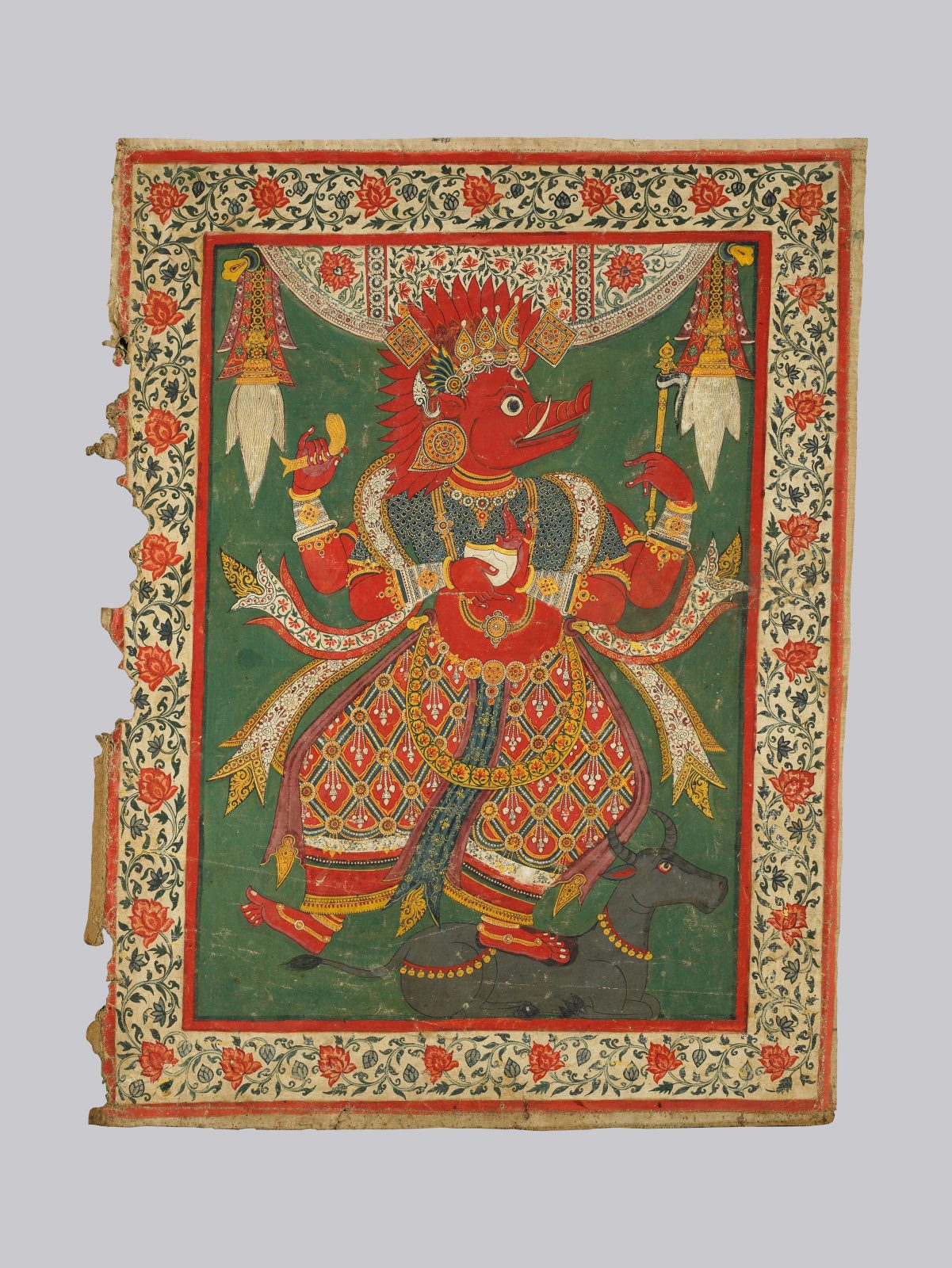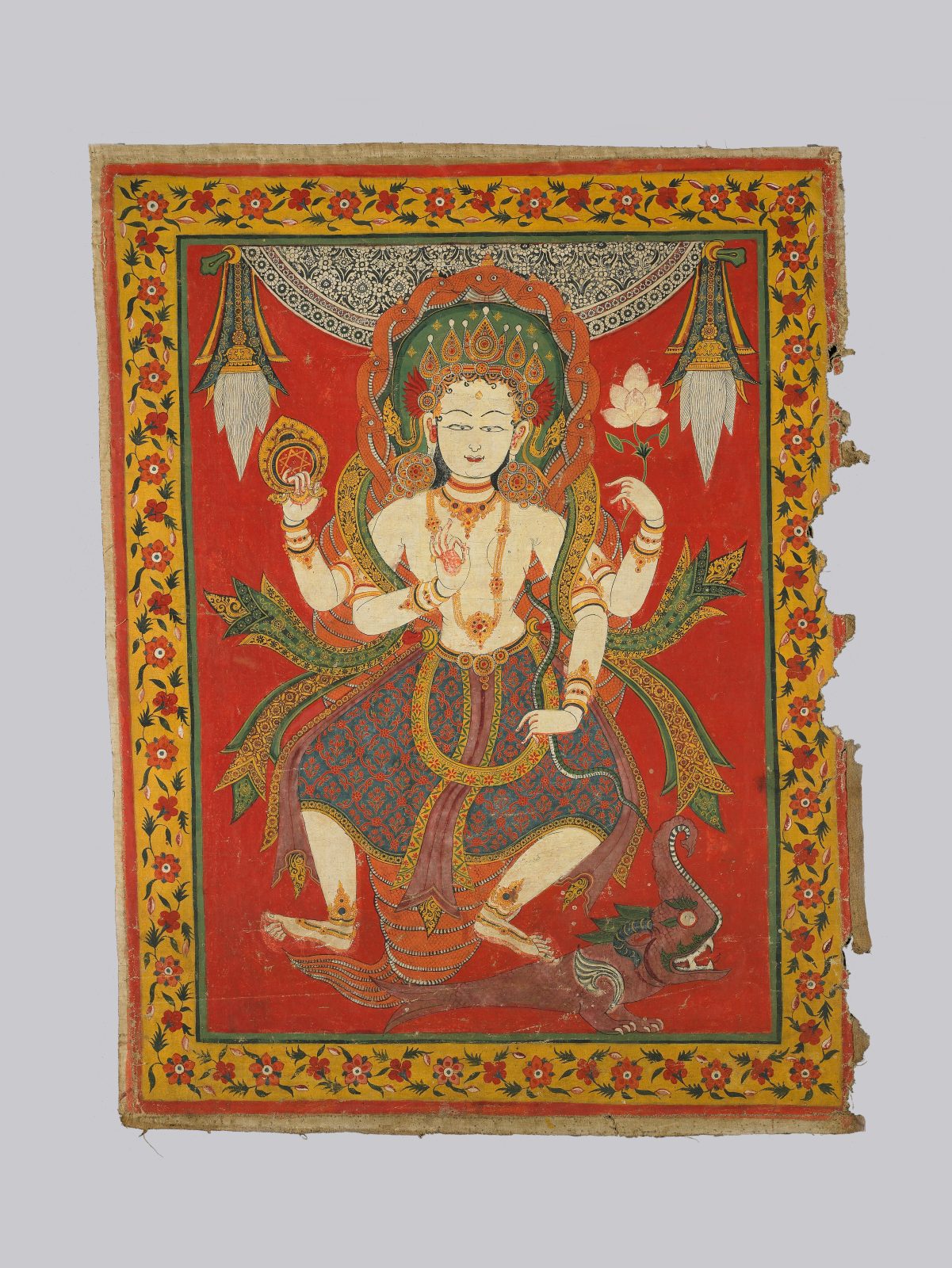The exhibition Nepalese Seasons: Rain and Ritual was based on the cyclical nature of the monsoons. Throughout the year, the indigenous people of the Kathmandu Valley (Newars) perform various rituals and festivals in order to ensure the cycles of the seasons remain predictable and dependable.
In the earliest forms of Hinduism, the Vedic texts considered clouds and rivers to be goddesses, due to water’s association with life and fertility. During the autumn Gathamuga festival, Newars conduct rituals to “impregnate” the skies in order to make sure they give birth to the monsoon rains nine lunar months later. The festival is also a time to dispel certain spirits that are associated with agriculture and the seasons.



